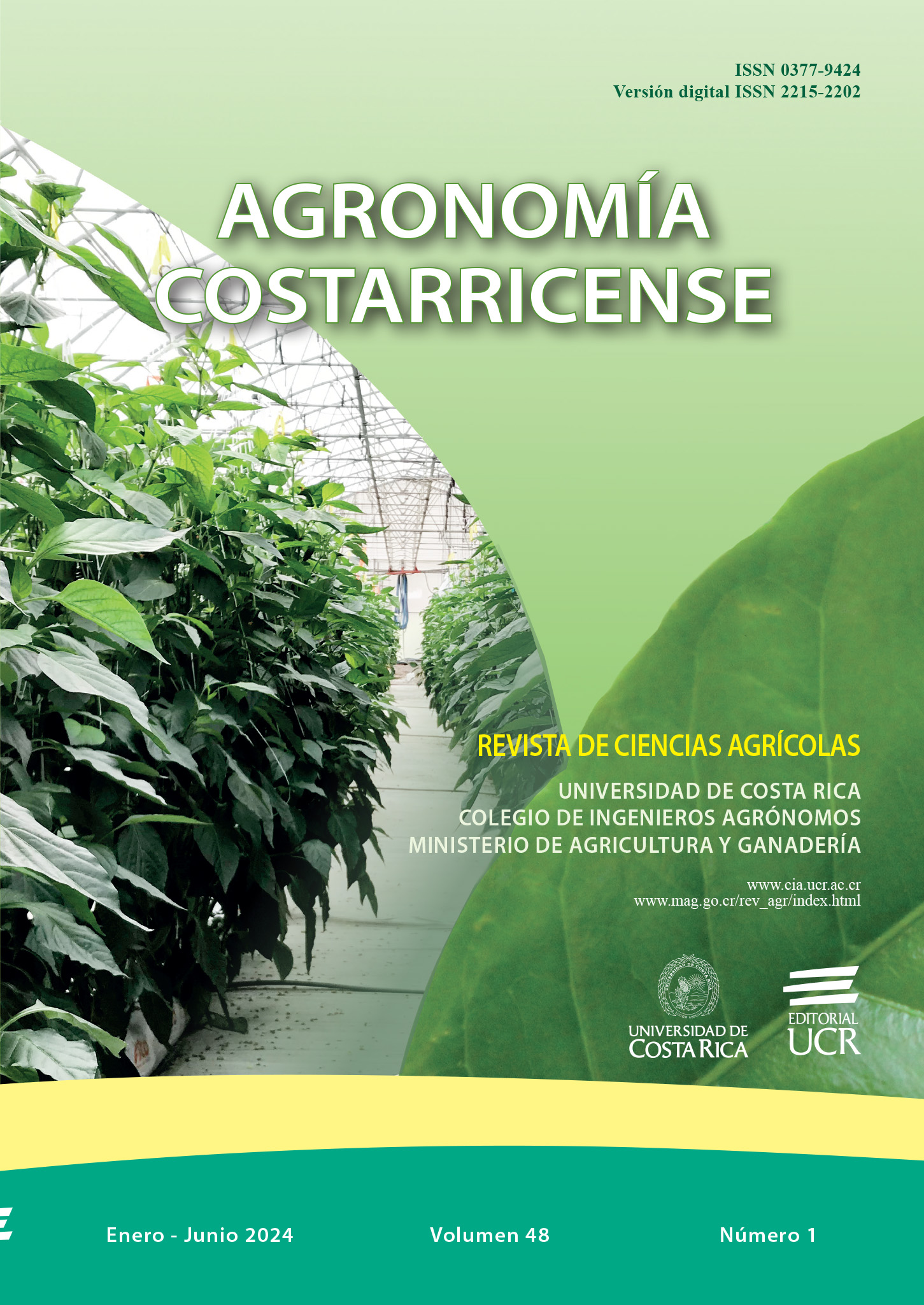Abstract
Introduction. In tomato breeding programs, obtaining new genotypes requires the evaluation of genetic materials in different environments. Objective. To identify tomato genotypes with better adaptability and stability in the province of Los Santos, Panama. Materials and methods. This research was carried out in 5 environments in the province of Los Santos, Panama, during 2022-2023 agricultural cycle. Fifteen genotypes were planted under a randomized complete block design with 3 replications. The data obtained were analyzed by analysis of variance at the level of each environment and combined using the residual maximum likelihood methodology (REML). The genotype-by-environment interaction was estimated by GGE-SReg Biplot analysis. Results and discussion. The analysis revealed a significant interaction between the genotypes and the environments studied, the first 2 axes of the principal components of the interaction explained 70.96% of the total variation. The GGE Biplot through Polygon (which, won, where) allowed the identification of 3 potential environmental groups. The group of mutants T7.RB-50-EN44-13, R1.15-17-18-LV14-2 and R3.10-79-81-LV7-1 were determined as the most outstanding for their stability and performance. The study on the discrimination capacity and representativeness of the environments identified El Ejido and Villa Lourdes as the most discriminating environments while Tres Quebradas was the most representative and the closest to the ideal target environment. Conclusion. The GGE-SReg Biplot analysis allowed an efficient analysis of the genotype-by-environment interaction, which makes it a very efficient tool to identify superior genotypes with good adaptability and stability to the region of interest.
##plugins.facebook.comentarios##

This work is licensed under a Creative Commons Attribution-NonCommercial-NoDerivatives 4.0 International License.
Copyright (c) 2024 Agronomía Costarricense


